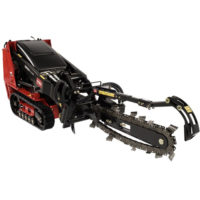Most people prefer to mulch their grass clippings, but there are distinct advantages to both bagging and mulching your lawn.
First, defining mulch explains the benefits. When grass clippings are cut fine enough to return to the soil surface, mulch is created. These small clippings break down easily and return nutrients (specifically nitrogen) to the soil.
The key benefits of mulching
- The nutrients in grass clippings fertilize your lawn
- Clippings reduce the temperature of soil and prevents evaporation
- Reduces waste in landfills
- Saves time, because you don’t have to empty the bag
The most important aspect of mulch is the size of the clippings. If grass is too tall or too wet, clumps form or worse the engine is strained. Clumps are not only unsightly, they can damage your yard (learn more). In these instances, you may consider bagging.
The key benefits of bagging
- Prevents excess grass clippings from damaging your turf
- Reduces yard waste trailed into your home by pets
- Creates a useful compost ingredient
- Leaves a clean, crisp look on your lawn.
To summarize, if you can mow without leaving any excess clippings, then mulch your lawn. If grass clumps form, then switch to the bagging setting. Bagging is also a good way to clean debris before the mowing season begins and at the end of the season.
Finally, to achieve an ideal cut scrape beneath the mower deck and make sure the blade is sharp.


Recent Comments